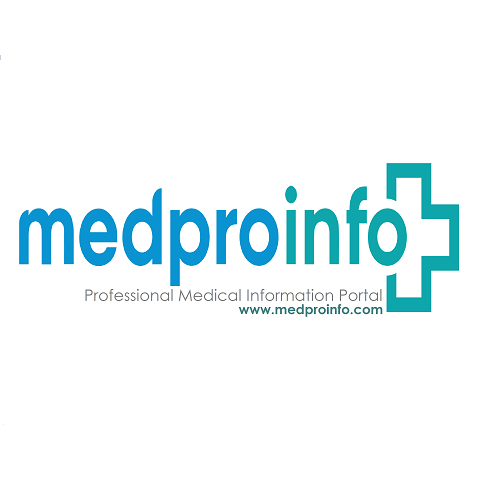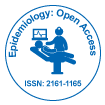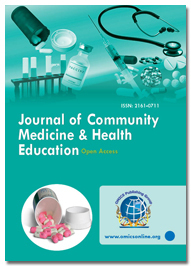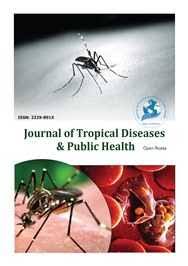Theme: Exploring the Emerging Transitions in Epidemiology and Public Health
Euro Epidemiology 2020
ME Conferences is hosting a webinar on " 10th European Epidemiology and Public Health" during June 9-10, 2020 ; which brings you a series of fabulous researchers, scientists, industrialists etc., who will be sharing their experiences from various perspectives and addressing key questions.
The main motto is to update skills, enhance knowledge base, and networking through virtual platform.
During the period of travel restrictions and lockdown, why waste your time?Â
Join our webinar to share and gain knowledge on Epidemiology and Public Health!!
Â
Benefits of joining webinar: Â
• Reduced costs and affordability
• Access to all sessions online
 • Make new connections
 • Get your abstracts published with DOI
 • Get certified for your participation
 • Global exposure of your research
 • Increased engagement Â
• Develop your business Â
• Monitor your competitors activities
 • Cost effectiveness
 • Significant time saving Â
• Convenience Guidelines for presenters:
 • Each presenter will have 20-25 minutes for their presentation. Â
• Plan your talk for 15 minutes to allow for introduction and Q&A sessions at the end of your talk. Â
• Ensure that you start and end your presentation on the times indicated in the program. Â
• Language preference- English
Â
Contact: Lucy Watson
Email- connect@memeetings.com
WhatsApp Number- +44-7723584560
Â
Track 1: Epidemiology of Infectious Diseases
Infectious disease epidemiology is the study of the relationships among hosts and infection causative agents. Epidemiologists are focussed on virus spread or transmission, with or without disease. In order to model virus transmission, epidemiologists try to account for a variety of factors involving both host and virus.
Susceptibility to infectious disease results from several major corresponding factors, including socioeconomic, biological, and environmental factors. Major social processes such as globalization, unplanned rapid urbanization, widespread poverty, and inequalities lead to vulnerability of population subgroups.
Track 2: Cancer Epidemiology
Cancer epidemiology is the study of the factors, distribution and frequency of malignant disease in definite populations. The main objective is to define causative factors to formulate preventive strategies for control of the disease. Epidemiologic valuation provides the clinician with a quantification of cancer risk, outlines the basis for screening modalities for high-risk populations, and determines the efficacy of any preventive intervention.
Track 3: Cardiometabolic Disease Epidemiology
Epidemiologic research in cardiometabolic diseases inspects causes of heart disease and metabolic disorders such as diabetes, hypertension, obesity, and identifies preventive factors. Cardiometabolic complications are multifactorial diseases, and includes different factors like changes in living environments, diets, lifestyles, genetic, and epigenetic factor. Diabetes is one of the major causes of cardiometabolic complications. A common problem in diabetic patients is the maintenance of glycemic levels within a narrow range, meeting the recommendations of the Diabetes Control.
Track 4: Nutritional Epidemiology
Nutritional epidemiology is a relatively new field in medical research that examines the role of nutrition in the aetiology of disease, monitors the nutritional status of populations, develops and evaluates interventions to achieve and maintain healthful eating habits among populations, and examines the relationship and interaction between nutrition and physical activity in health and disease.
Track 5: Pharmacoepidemiology
Pharmacoepidemiology is the study of the application and effects of drugs in large numbers of people; it provides an approximation of the probability of beneficial effects of a drug in a population and the probability of adverse effects.. Pharmacoepidemiology focuses on clinical patient consequences from therapeutics by using methods of clinical epidemiology and applying them to understanding the determinants of beneficial and adverse drug effects, effects of genetic variation on drug effect, clinical effects of drug-drug interactions, and the effects of medication .
Track 6: Molecular Epidemiology
Molecular epidemiology emphasises on the contribution of probable genetic and environmental risk factors, recognised at the molecular level, distribution and prevention of disease across populations. This field has arose from the amalgamation of molecular biology into traditional epidemiological research. It improves our understanding of the pathogenesis of disease by identifying specific pathways, molecules and genes that effect the risk of developing disease. More broadly, it seeks to establish understanding of how the interactions between genetic traits and environmental exposures result in disease.
Track 7: Genetic Epidemiology
Genetic epidemiology represents amalgam of epidemiologic designs and statistical models that clearly consider both genetic and environmental risk factors for complex diseases, that is, those diseases that have some genetic component to their aetiology. Genetic epidemiology uses unique case-control, family, and population-based designs, and genotyping from numerous sources. Currently genetic epidemiology has been focused on the medical concept of personalised medicine.
Track 8: Clinical Epidemiology
Clinical epidemiology can be well-defined as the investigation and control of the distribution and elements of disease. Clinical Epidemiology has been evolved in modern medicine Trial in which one mediates to prevent or change the course of a disease, are used to evaluate preventive or therapeutic interventions, but can also provide strong evidence of causality.
Track 9: Epidemiology of Breast Cancer
Breast cancer is the commonest cause of death in women worldwide. It is increasing in areas that until recently had low rates of the disease. Many of the well-known risk factors are linked to oestrogens. Risk is increased by early menarche, late menopause. Both oral contraceptive pill consumption and hormonal therapy for menopause also enhance the risk of breast cancer. Each year, 40,000 women die of breast cancer, making it the second-leading cause of cancer deaths.
Track 10: Geriatric Epidemiology
An aging-associated disease the disease that is regularly seen with increasing incidence with senescence. Essentially, aging-associated diseases are complications arising from senescence. Aging-associated diseases do not denote to age-specific diseases, such as the childhood diseases chicken pox and measles. Examples of aging-associated diseases are atherosclerosis and cardiovascular disease, cancer, arthritis, osteoporosis, type 2 diabetes, hypertension . The commonness of all of these diseases increases exponentially with age.
Track 11: Psychiatric Epidemiology
Psychiatric epidemiology is a arena which studies the aetiology of mental disorders as well as conceptualization and prevalence of mental illness. It has roots in sociological studies of the early 20th century. Increasingly neuro scientific techniques like MRI are used to explore the mechanisms and exposures to risk factors impact psychological problems and explore the neuroanatomical substrate underlying psychiatric disorders.
Track 12: Epidemiology of Oral Health
Epidemiology in oral health is a growing field of knowledge for scientific research. Moreover, it deepens discussions about oral pathologies and the association with bio-psychosocial factors. and periodontal disease are one of the major public health problem, therefore epidemiological studies are useful for identifying and observing their prevalence among different age and geographical groups, giving new treatment perspectives. It is understood that epidemiology can confer a projecting significance to clinical data, becoming very useful in executing preventive strategies to reduce the rate of dental problems.
Track 13: Reproductive Epidemiology
Reproductive Epidemiology is the study of reproduction-related morbidity, mortality, and other health issues in males and females. It investigates the distribution and causes of reproductive diseases in human populations. Epidemiology helps to better understand the cause of a medical condition and how it can be prevented, or its commonness in the population. Reproductive topics include pubertal development, female reproductive cancers and sexually transmitted infections.
Track 14: Maternal and Child Health Epidemiology
Maternal and child health is the health of the women during and post-partum, pregnancy, childbirth, and the post-partum period. It encompasses the health care dimensions of family planning, preconception, prenatal, and postnatal care experience, in most cases, and reduce maternal morbidity and mortality, in other cases. Maternal, foetal and neonatal mortality is more in low-income compared to high-income countries due to poor health systems access as well as utilization of health services.
Track 15: Epidemiology and Medical Sociology
The field is concerned with basic social science research and its implications for public policy and practice. Medical Sociology and Epidemiology are interlinked with each other. Medical and sociology appeals on traditional sociological issues and contributes to them through reformulations of basic concepts as social systems and institutions, professionalism, social movements and social change, and social interaction and negotiation. Medical Sociology and Epidemiology are interlinked with each other.
Track 16: Environmental and Occupational Epidemiology
Environmental epidemiology seeks to understand how physical, chemical, biologic, as well as, social and economic factors affect human health.. Environmental epidemiology studies external factors that affect the incidence, occurrence, and geographic range of health conditions. Environmental epidemiology identifies and computes exposures to environmental contaminants; conducts risk assessments and risk communication; provides scrutiny for adverse health effects; and provides health-based guidance on levels of exposure to such contaminants.
Track 17: Air Pollution and Public Health
Air pollution is a major cause of disease and death universally. An estimated 4.2 million premature deaths globally are linked to ambient air pollution, primarily from heart disease, stroke, chronic obstructive pulmonary disease, lung cancer, and acute respiratory infections in children. Pollutants with the strongest evidence for public health concern, include particulate matter (PM), ozone (O3), nitrogen dioxide (NO2) and sulphur dioxide. In children and adults, both short- and long-term exposure to ambient air pollution can lead to condensed lung function, respiratory infections and asthma.
Track 18: Neuroepidemiology
Epidemiology is the study of the natural history of disease, which comprises its frequency, severity, and course and the identification of risk factors that effect these aspects. Neuroepidemiology is the branch of epidemiology dealing with disorders that affect the nervous system. Frequency of disease is measured by population-based rates, which are ratios of the number of cases to the population at risk, expressed as cases per unit of population.
Track 19: Obesity and Public Health
Obesity is a medical condition in which surplus body fat has deposited to an extent that it may have a harmful effect on health. People are generally considered obese when their body mass index (BMI), a measurement obtained by dividing a person's weight by the square of the person's height, is defined as overweight. Obesity increases the possibility of various diseases and conditions, particularly cardiovascular diseases, type 2 diabetes, obstructive sleep, certain types of cancer, osteoarthritis, and Depression.
Track 20: Public Health Measures
Public health measures are non-medical interventions used to decrease the spread of disease. The emphasis of public health intervention is to improve health and quality of life through the prevention and treatment of disease. This can be done through observation of cases, and the promotion of healthy manners. Promotion of hand hygiene by hand washing, breastfeeding , administration of vaccines(antigenic material) to stimulate an individuals immune system to develop adaptive immunity to pathogen , limiting public gatherings and distribution of condoms to control the spread of sexually transmitted diseases(STD), are examples of common public health measures.
Market Analysis for Euro Epidemiology 2020
Euro Epidemiology 2020 invites participants from all over the world to the webinar. We take immense pleasure to welcome you to the “10th European Epidemiology and Public Health Congress†is going to be held during June 9-10, 2020
The organizing committee is harness up for an energizing and educational gathering program counting comprehensive lectures, symposia and workshops on different topics, notice presentations and distinctive ventures for individuals from all over the world. We welcome to connect us at the Eurooean Epidemiology-2020, where you will make certain to have an imperative association with researchers from around the world. All members of the Euro Epidemiology-2020 organizing committee expect meeting.
Importance and Scope
Epidemiology is the study of disease occurrence and transmission in a human population, epidemiological studies focus on the distribution and determinants of disease. Epidemiology is also be considered the method of public health-a scientific approach to studying disease and health problems. It consists of research methods and specific strategies for counting and calculating the occurrence and risk of disease. Therefore, epidemiological studies of drug use employ these methods and statistical measures to study the occurrence and distribution of drug use and its associated problems. Examples of epidemiology applied to drug use include adverse drug reaction reporting, post marketing surveillance studies, and clinical drug trials.
Market Analysis of Epidemiology and Public Health
In the past 18 years, undergone rapid social, cultural, and economic changes. The lifestyle and dietary habits of its people have also been changing, and the rates of diabetes, obesity, cancer, and other chronic diseases have increased dramatically over the past two decades. The health transformation program (HTP) has improved the health-care system since 2003. The main goal of HTP was to progress government, to provide equality between citizens, to give satisfaction to users and providers, and to subsidise the health-care system in
Market Report of Infectious Diseases
The global infectious disease therapeutics market size was valued at USD 46.88 billion in  2016 and is projected to grow at a CAGR of 6.6% during the forecast period. Rising prevalence of infectious ailments, increasing expenditure to boost the penetration rate of treatments of these diseases, rising initiatives for creating awareness about treatments & diagnosis of these conditions, and increasing clinical trial studies for development of new drugs are likely to be the factors responsible for growth of this market.
The graph below shown explains that the reagents were the leading product segment in terms of revenue in 2018, majorly driven by their high usage rate. Increasing R&D initiatives pertaining to molecular diagnostic technologies and rising demand for point-of-care and self-test products are anticipated to support the dominance of the segment through 2026. The segment is projected to expand at a CAGR of 6.9% during the forecast period. Analytical instruments are equipment and machines that assist in automating processes and combining reagents and samples, like diagnosis through PCR for detecting and quantifying infectious microorganisms, blood antigens, and viral load.
        
Market Report of Cancer
The global oncology/cancer drugs market was valued at $97,401 million in 2017, and is estimated to reach at $176,509 million by 2025, registering a CAGR of 7.6% from 2018 to 2025. According to drug class type, the targeted therapy segment occupied the largest oncology/cancer drugs market share in 2017. This is due to the ability of targeted therapies to kill only malignant cells, higher efficacy and higher survival rates associated with their use. The immunotherapy segment is expected to show fastest growth during the forecast period, registering a CAGR of 10.4%.Â
           
  The above graph shows that, according to indication, the prostate cancer segment occupied the largest oncology/cancer drugs market share in 2017. This is due to presence of huge geriatric population. The lung cancer segment is expected to show fastest growth during the forecast period. This is due to technological developments in the field of cancer diagnostics and rise in the awareness related to the early diagnosis of cancer.
Conference Highlights                                   Â
Epidemiology of Infectious Diseases, Cancer Epidemiology, Cardiometabolic Disease Epidemiology, Nutritional Epidemiology, Pharmacoepidemiology, Molecular Epidemiology, ,Genetic Epidemiology, Clinical Epidemiology, Epidemiology of Breast Cancer, Geriatric Epidemiology, Psychiatric Epidemiology, Epidemiology of Oral Health, Reproductive Epidemiology, Maternal and Child Health, Epidemiology and Medical Sociology, Environmental and Occupational Epidemiology, Air Pollution and Public Health, Neuro Epidemiology, Obesity and Public Health, Public Health Measures.
Who Should Attend?
Epidemiologists, Healthcare Professionals, Academicians, Biotechnology Experts, Biostatistics Analysts, Physicians, Medical Practitioners, Health care administrators, Pathologists, Gynaecologists, Health Authorities, Local Public Health Organizations, Medical Residents, Therapeutic experts, Doctors, Therapists, Public Wellbeing Educators, Enrolled Nurses, Scientists, Public Health Investigators
Target Audience
- Academia
- Medical Representatives
- Other
 Public Health Organisations
- Agency for Toxic Substances and Disease Registry
- Association of State and Territorial Health Officials
- Association of Public Health Laboratories
- The Public Health Foundation
- World Health Organization
Public Health Associations and Societies
- American Public health Association
- European Public Health Association
- Canadian Public Health Association
- Food and Drug Association
- Council on Education for Public Health
- Centre for Disease Control and Prevention
- International Federation of Environmental Health
- Partnership for Maternal, Newborn and Child Health
- Society for Social Medicine
- Society for Public Health Education
Epidemiology and Public Health Universities
- Istanbul Aydin University
- John Hopkins University.
- Harvard University.
- University of North Carolina Chapel Hill.
- Columbia University.
- Emory University.
- University of Michigan
- University of Washington.
- Boston University.
- Middle East Technical University
- Bilkent University
Conference Highlights
- Epidemiology of Infectious Diseases
- Cancer Epidemiology
- Epidemiology of Cardiometabolic Disease
- Nutritional Epidemiology
- Pharmacoepidemiology
- Molecular Epidemiology
- Genetic Epidemiology
- Clinical Epidemiology
- Epidemiology of Breast Cancer
- Geriatric Epidemiology
- Psychiatric Epidemiology
- Epidemiology of Oral Health
- Reproductive Epidemiology
- Maternal and Child Health Epidemiology
- Epidemiology and Medical Sociology
- Environmental and Occupational Epidemiology
- Air Pollution and Public Health
- Neuroepidemiology
- Obesity and Public Health
- Public Health Measures
To share your views and research, please click here to register for the Conference.
To Collaborate Scientific Professionals around the World
| Conference Date | June 09-10, 2020 | ||
| Sponsors & Exhibitors |
|
||
| Speaker Opportunity Closed | |||
| Poster Opportunity Closed | Click Here to View | ||
Useful Links
Special Issues
All accepted abstracts will be published in respective Our International Journals.
- Epidemiology Open Acces
- Journal of Community Medicine & Health Educattion
- Journal of Tropical Disease & Public Health
Abstracts will be provided with Digital Object Identifier by


















